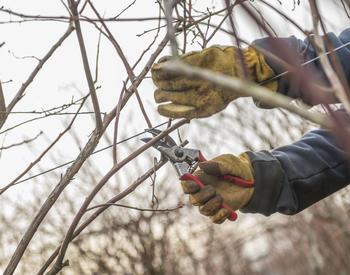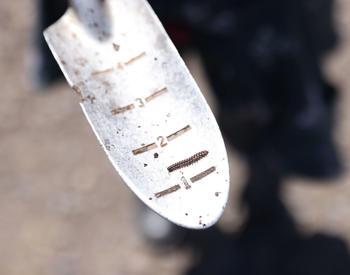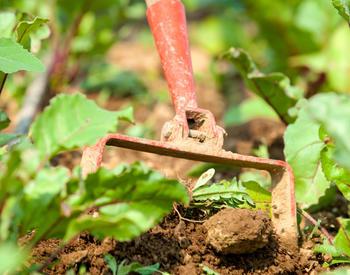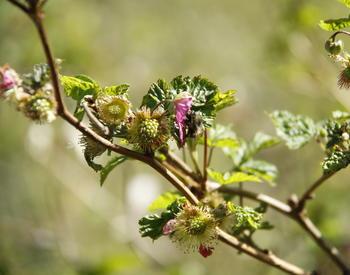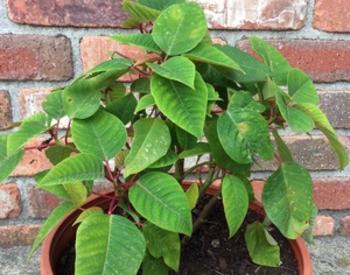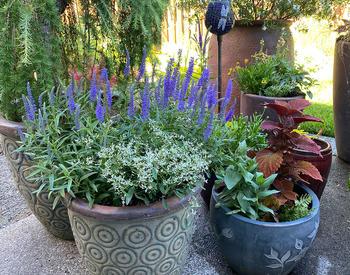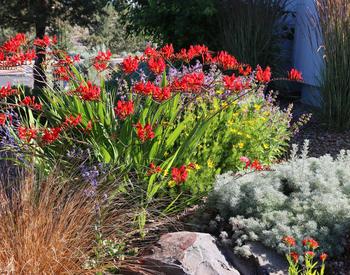Transcript
In this segment, we'll be raising the canopy of a blue spruce. This is a pretty mature blue spruce, John. How old do you think it is?
John: Well, this is about 15 years old plus, closer to 20, very likely. And the blue spruce can reach anywhere from 40 to 80 feet in height.
Okay, so this is obviously one that's going to get pretty large, and these limbs on the bottom look pretty good from here. What's the value of raising the canopy in a situation like this? What are some of the reasons a homeowner might consider that?
John: Sure, so we really like the elegant look of a blue spruce, you know, when it's skirting the ground and has that beautiful Christmas tree look or, you know, conical shape to them. But there are times when a homeowner may decide, you know, I just need to get some space and some light underneath this tree, and I'm going to go ahead and prune some of the whirls off. What I mean by whirls is the branches are sort of oppositely attached, and if you take off one branch, it's a good idea to go ahead and take the branches off all the way around so that now you have the same elevation beneath. So, there's multiple branches coming out at one place, so if you take one branch off from that set, it's probably best to go ahead and clear that whole round or level. You might think of them as wheels or spokes on a wheel, you know, where they do go all the way around the diameter of that trunk.
So, conifers don't respond to pruning in the same way that some of our other trees do, our deciduous trees in particular. What are some of the other reasons that a homeowner might choose to prune a conifer?
John: Well, again, if branches are touching the ground, in some climates, that could lead to a fungal decay. Now, we don't see that in eastern Oregon climates so much, but it's another reason, again, just to keep them up off the ground. It does make it a little easier to clean underneath and such, and again, to have that site visibility through if you're concerned about having openings to view through the trees, just making you feel more safe and secure.
So, once the bottom rungs or spokes of these wheels are cut off, are they going to grow back from there?
John: Well, unlike deciduous trees, which tend to sprout back out at many of those pruning cuts, the conifers do not. Now, I should say that they will lightly, but they don't come back in the same way that they had before. So, it's rare to see regrowth of those branches.
Again, that makes it sound like we want to be really careful about the choices we make when we prune a conifer, maybe avoid it altogether. How can we do that?
John: Well, the best method is, of course, if you have a fresh landscape or you're taking trees out, then you're going to be shopping for plants that are going to fit in the place that they have available to them. And that means fit at maturity in order to do so.
You know, John, that's a really good point. Some trees are probably better removed altogether and replaced with a tree that's going to fit better or more appropriately in that space, rather than you going through all of the extra work and then treating the tree in that fashion for years to come.
John: Indeed. Today, with the wholesale nurseries growing a wide range of cultivated varieties, we have many choices at our disposal. It's a matter of maybe just looking those up online in a search for conifers that you like or going to your local nurseries and finding out what they have and then relying on the expertise of those that work there.
Awesome. Well, thank you so much for filling me in on that. Let's go check in on Tom's progress. So, keep in mind that if you're going to be pruning branches off of a conifer like this, we're not really reducing the length of those branches, but we want to take them entirely off at the trunk. So, Tom has had to get into the tree itself where he can make those cuts. Again, he may make shorter cuts and then finish with a cut very close to the trunk. But keep in mind, we don't want to do something called a flush cut where you're actually cutting too close to the trunk tissue and opening up that wound into the trunk itself. That has a much harder time compartmentalizing decay. In other words, we don't want decay getting into the main stem of that tree. So, Tom is working his way up, kind of layer by layer, and you can already see that the branches are up off the ground, and it looks like he's finished with this.
Also, while you're in there, you might take a look at any dead branches or twigs and deal with those at the same time. Again, you can take off dead branches any time of the year, and it does open that up to more light and air circulation within the trunk or the crown of that tree.
It looks like there's more airflow under there. I can see where that would really make a difference in those humid climates where fungal pathogens tend to be a problem.
John: Yes, exactly. That makes a lot of sense.
Yes, and it also makes for easier cleanup as a property owner, as a maintenance contractor, and as this tree gets larger, remember, these trees are going to get these branches are going to get longer and longer, and they're going to begin to droop. So, within five years, we're going to have something very similar to what we just dealt with right before, which is branches like this touching the ground. Eventually, in an arboretum setting or in a mature landscape, we may have elevated these limbs up to 10 feet at the trunk, and they'll still be coming out close to the ground and providing that screen or other aesthetic purposes that you may have this tree in your landscape.
John: Do you want to quickly demonstrate how, with those arching effect branches, we can raise those just by taking a little bit of material off underneath the bow?
Sure. So, we don't necessarily need to take all the branches back to the trunk every time, but we can take some of the end weight off, which causes the branch now to lift and give us that space beneath that we're looking for. Okay, so here we go. We want to just raise this up a little bit. We can reduce weight like that, and even maybe some end weight like that, and then do the same thing here. Okay, as soon as Tom releases the hold on that branch, you'll see that now it lifts up because there's less weight on the end of that branch. And that's another way that we can gain that elevation without taking a limb entirely off.
John: That's great, guys. Thanks so much. Just to wrap on that, some of the primary reasons that we might cut on a conifer have to do with clearing out those skirting branches, keeping them off the ground for disease, for maintenance, for airflow, and then maybe just a light trimming of some of those edges for weight
so that we can pull the canopy up just a little bit. Not a lot of other pruning on our conifers, eh?
No, other than just taking any of the dead branches out that you see, mainly for aesthetic effect and again, getting a little bit of light and airflow. Thank you.
Getting sunlight into the canopy of a tree can help provide good light penetration and air circulation, assist ripening in fruit trees, and is pleasing to look at. Join our pruning pros for a demonstration on thinning the canopy of a mature crabapple tree.
